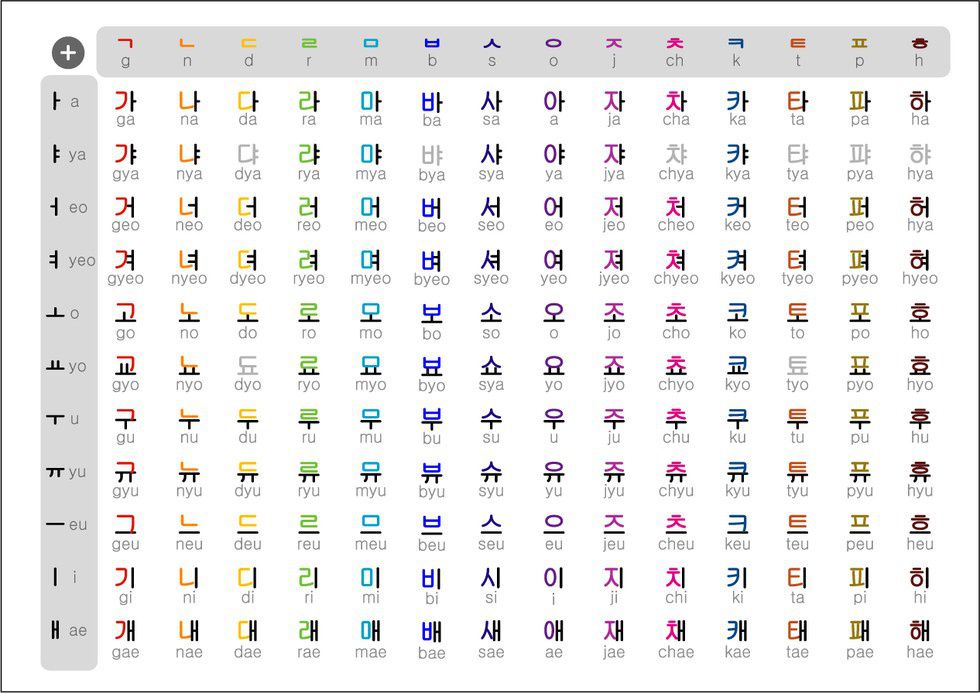With all the interesting and diverse languages in the world, it’s hard not to wonder what Taiwanese sounds like or how to say potato in Norwegian.
A lot can be learned about languages through culture. Take South Korea for example – the home of Gangnam Style and K-pop. K-pop was the very thing that got me interested in the country's language: Korean. Wouldn’t it be cool to be able to sing along with PSY and Girls' Generation?
Learning Korean is not as hard as you may think. Hangul (the Korean alphabet) is actually quite simple and easy to write. The Korean characters are simple lines and shapes that anyone can draw with relative ease.The pronunciations of the words are where things get a little interesting. My goal today is to introduce the basic concept of Korean and hopefully give some helpful tips to anyone who's also trying to learn how to read and write in Korean.
Tip 1: Hangul Basics
If you truly want to understand the Korean language rather than just random phrases here and there, you need to know Hangul. An easy way to learn this is by printing (or better yet, hand drawing) a Hangul chart with all the characters and the sound they make. Go over this chart every day for at least 10 minutes, and you will have it memorized before you know it, trust me. Simply continue to review the symbols every other day, and eventually, you will know them by heart.
Tip 2: Hear the words properly.
It's important to understand what the Hangul characters actually mean. You can easily find help via YouTube videos and language CDs (if you have the money). I prefer the least costly way: apps. Some very helpful Korean apps are Eggbun Education and Korean-to-English dictionaries. You can also turn on various Korean programs to listen to how they use the words.
Tip 3: Immerse yourself.
It is important to immerse yourself in the Korean language. Read it, hear it, speak it and study it. A good way to do this is by listening to Korean music like K-pop (yes, PSY), or by watching Korean news and dramas. Korean dramas are Korean TV shows that expose you to the culture while subtly teaching you how the words are pronounced naturally. Watch these often enough, and you'll find your vocabulary slowly expanding. Watching Korean children's cartoons is also a very useful way to learn basic Korean words. A good show to watch is Pororo, a popular Korean TV show for kids. Another helpful tool is to download the audio file of a YouTube video that goes over basic Korean techniques or words so that you can listen to it when you're on the go.
Tip 4: Create a journal.
Every element of your language journey should be fun. Make a notebook to jot down newly learned words or fun facts about Korean culture. Incorporate entertaining pictures or drawings. Don't see reviewing your notebook as a chore but rather as your cheat sheet to reaching your language goal even faster! Simply stay organized and keep your notes clear and easy to refer back to.
Tip 5: Don't give up.
As you advance in the language, sentence structure and spelling may get more difficult, but fear not, everything gets easier with practice. You will be surprised at how much you can fit into a busy schedule. Try flipping through note cards for a few minutes during commercial breaks or while in the waiting room before an appointment. Even if you go a week or so without review, you can still bounce back. Do not give up on your goals.
Tip 6: Have fun with it!
You should be excited as you proceed with your Hangul journey. Go to the library and see how many words you can encrypt from a single page or passage of any Korean book. Find a Korean pen pal to practice your skills with. Listen to Korean pop music and sing along with the lyrics. There are plenty of ways to both practice and enhance your skills. Good luck!

























